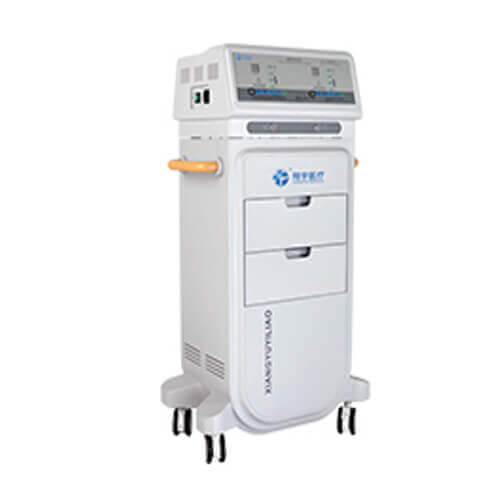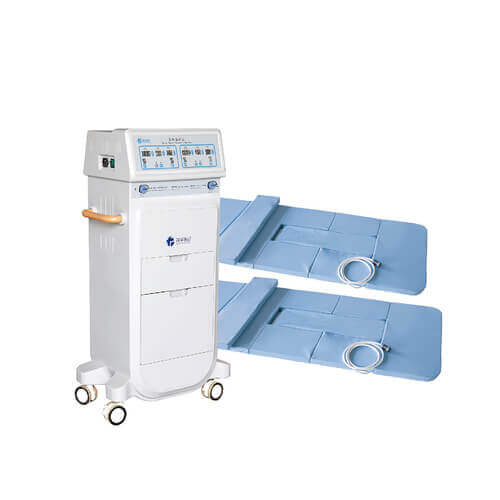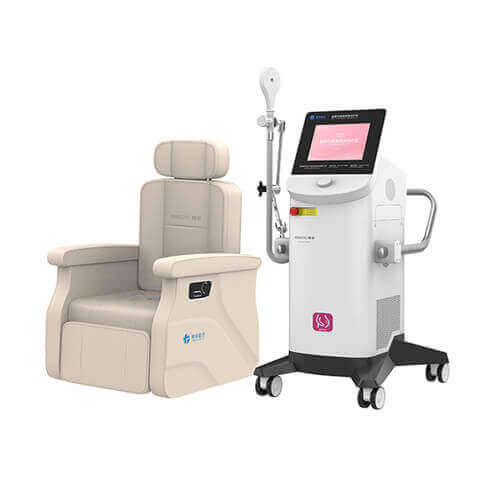Overview of The Laser Magnetic Stimulation Therapy SH-JGC Physiotherapy Equipment
This SH-K-CZR Magnetic Vibration and Heating device combine three treatment methods of magnetic therapy, vibration, and hyperthermia, and simultaneously outputs to the patient to expand the blood vessel of the patient, thereby accelerating the absorption of the inflammatory exudate and reducing the excitability of the peripheral nerve. It relieves muscle stiffness, relieves muscle and nerve pain, activates gastrointestinal function, and plays a role in anti-inflammatory, swelling, and analgesia.
SH-K-CZR Series Physiotherapy Equipment Working Principle
1. Magnetic-conductor coil generates an alternating magnetic field due to alternating current.
It can change the size and direction of the human bioelectric current. Induction generates weak eddy currents, affects the direction of electron motion, the distribution, concentration, and speed of movement, of ions inside and outside the cell, changes membrane potential, affects nerve excitability and cell membrane permeability, material exchange, and biochemical processes inside and outside the cell and plays a role in reducing swelling, reducing inflammation and relieving pain.
2. Vibration – alternating magnetic vibration due to changes in the polarity direction.
Vibration at a specific frequency acts as a partial light massage that relieves muscle tension, fatigue, and soreness.
3. Heat – the coil core generates heat due to eddy currents.
Hyperthermia(heat therapy) can improve blood circulation, accelerate the discharge of pain-causing substances and the absorption of exudates, and increase the metabolism of cells.

SH-K-CZR Series Physiotherapy Equipment Features
- Combination of magnetic, vibration, and heat therapies to achieve synchronization of three therapies.
- Derivation arrangement into a bi-directional symmetric magnetic field for a wider and deeper treatment.
- The output of the therapeutic instrument stops after treatment, and there will be a peak alarm sound.
- The standard configuration of one standard thermal derivation, and optional configuration of one neck-shoulder thermal derivation, one joint heat derivation, and one separating heat derivation.











